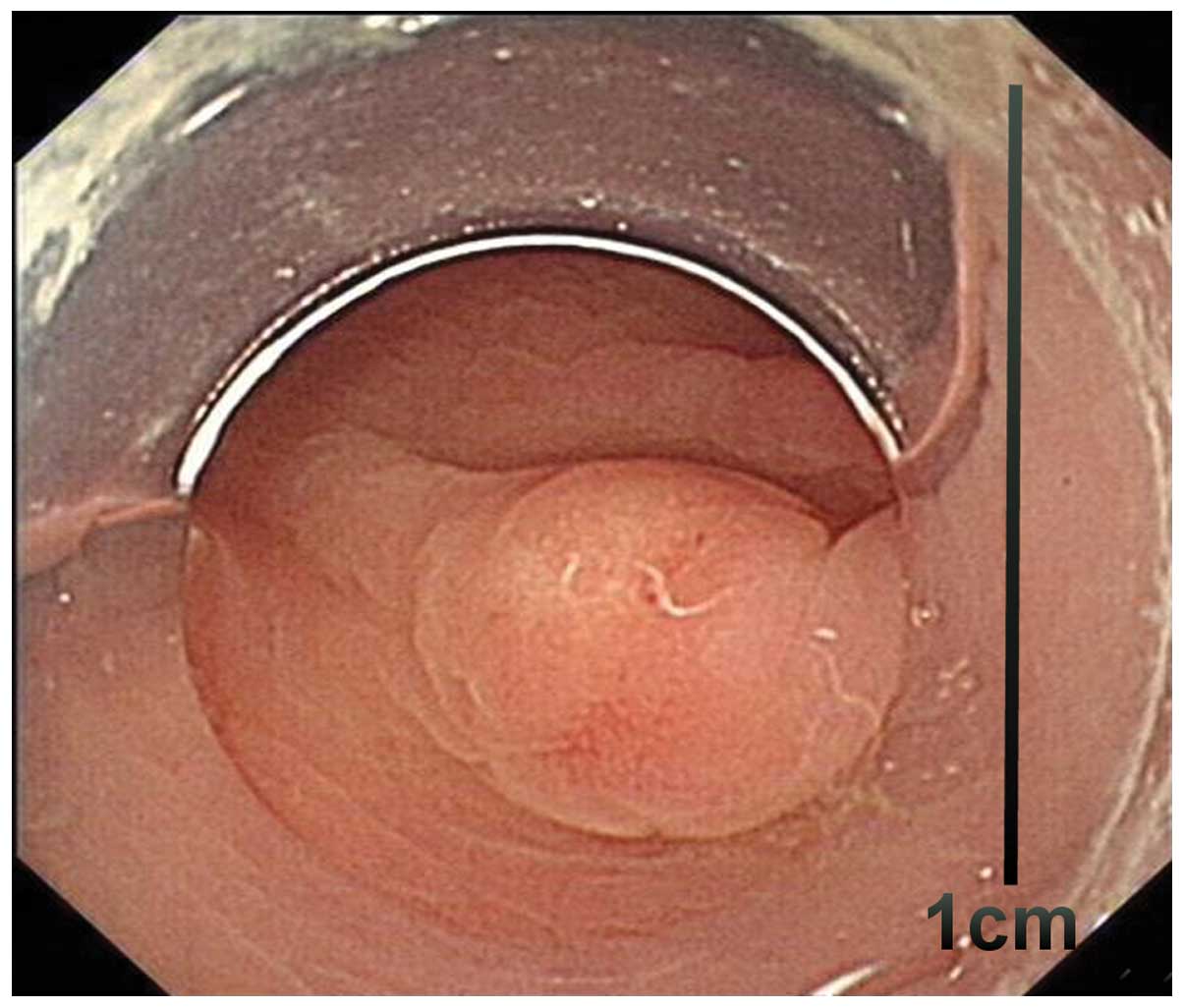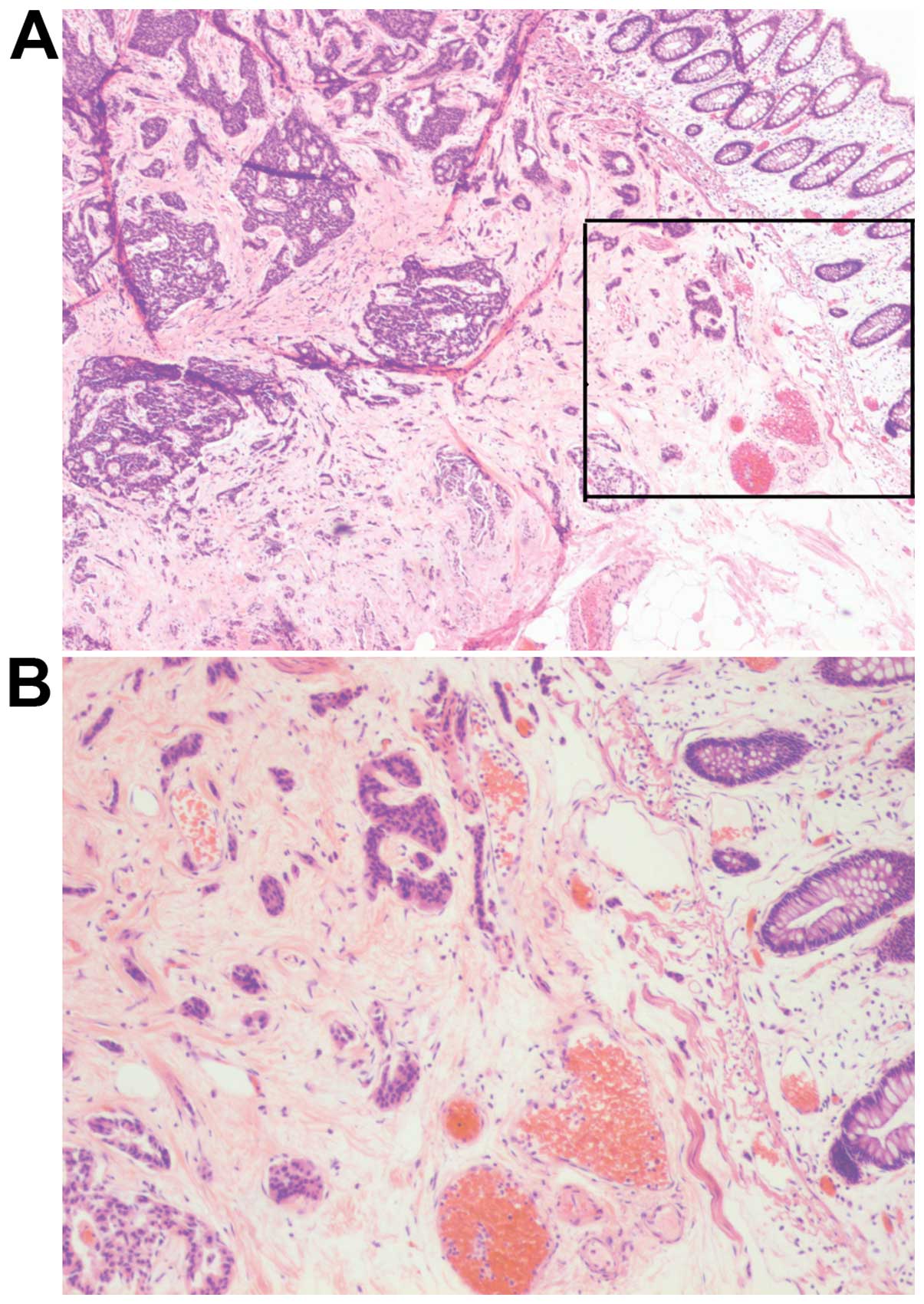|
1
|
Modlin IM, Lye KD and Kidd M: A 5-decade
analysis of 13,715 carcinoid tumors. Cancer. 97:934–959. 2003.
View Article : Google Scholar : PubMed/NCBI
|
|
2
|
Pape UF, Berndt U, Müller-Nordhorn J,
Böhmig M, Roll S, Koch M, Willich SN and Wiedenmann B: Prognostic
factors of long-term outcome in gastroenteropancreatic
neuroendocrine tumours. Endocr Relat Cancer. 15:1083–1097. 2008.
View Article : Google Scholar : PubMed/NCBI
|
|
3
|
Hauso O, Gustafsson BI, Kidd M, Waldum HL,
Drozdov I, Chan AK and Modlin IM: Neuroendocrine tumor
epidemiology: Contrasting Norway and North America. Cancer.
113:2655–2664. 2008. View Article : Google Scholar : PubMed/NCBI
|
|
4
|
Yao JC, Hassan M, Phan A, Dagohoy C, Leary
C, Mares JE, Abdalla EK, Fleming JB, Vauthey JN, Rashid A and Evans
DB: One hundred years after ‘carcinoid’: Epidemiology of and
prognostic factors for neuroendocrine tumors in 35,825 cases in the
United States. J Clin Oncol. 26:3063–3072. 2008. View Article : Google Scholar : PubMed/NCBI
|
|
5
|
Berge T and Linell F: Carcinoid tumours.
Frequency in a defined population during a 12-year period. Acta
Pathol Microbiol Scand A. 84:322–330. 1976.PubMed/NCBI
|
|
6
|
Oberg K and Eriksson B: Endocrine tumours
of the pancreas. Best Pract Res Clin Gastroenterol. 19:753–781.
2005. View Article : Google Scholar : PubMed/NCBI
|
|
7
|
Modlin IM, Oberg K, Chung DC, Jensen RT,
de Herder WW, Thakker RV, Caplin M, Fave G Delle, Kaltsas GA,
Krenning EP, et al: Gastroenteropancreatic neuroendocrine tumours.
Lancet Oncol. 9:61–72. 2008. View Article : Google Scholar : PubMed/NCBI
|
|
8
|
Scherübl H, Cadiot G, Jensen RT, Rösch T,
Stölzel U and Klöppel G: Neuroendocrine tumors of the stomach
(gastric carcinoids) are on the rise: Small tumors, small problems?
Endoscopy. 42:664–671. 2010. View Article : Google Scholar : PubMed/NCBI
|
|
9
|
Scherübl H: Rectal carcinoids are on the
rise: Early detection by screening endoscopy. Endoscopy.
41:162–165. 2009. View Article : Google Scholar : PubMed/NCBI
|
|
10
|
Scherübl H, Jensen RT, Cadiot G, Stölzel U
and Klöppel G: Neuroendocrine tumors of the small bowels are on the
rise: Early aspects and management. World J Gastrointest Endosc.
2:325–334. 2010. View Article : Google Scholar : PubMed/NCBI
|
|
11
|
Strosberg J, Gardner N and Kvols L:
Survival and prognostic factor analysis of 146 metastatic
neuroendocrine tumors of the mid-gut. Neuroendocrinology.
89:471–476. 2009. View Article : Google Scholar : PubMed/NCBI
|
|
12
|
Zar N, Garmo H, Holmberg L, Rastad J and
Hellman P: Long-term survival of patients with small intestinal
carcinoid tumors. World J Surg. 28:1163–1168. 2004. View Article : Google Scholar : PubMed/NCBI
|
|
13
|
Scherübl H, Jensen RT, Cadiot G, Stölzel U
and Klöppel G: Management of early gastrointestinal neuroendocrine
neoplasms. World J Gastrointest Endosc. 3:133–139. 2011. View Article : Google Scholar : PubMed/NCBI
|
|
14
|
Kulke MH, Benson AB III, Bergsland E,
Berlin JD, Blaszkowsky LS, Choti MA, Clark OH, Doherty GM, Eason J,
Emerson L, et al: Neuroendocrine tumors. J Natl Compr Canc Netw.
10:724–764. 2012.PubMed/NCBI
|
|
15
|
Zhou FR, Huang LY and Wu CR: Endoscopic
mucosal resection for rectal carcinoids under micro-probe
ultrasound guidance. World J Gastroenterol. 19:2555–2559. 2013.
View Article : Google Scholar : PubMed/NCBI
|
|
16
|
Yamaguchi N, Isomoto H, Nishiyama H,
Fukuda E, Ishii H, Nakamura T, Ohnita K, Hayashi T, Kohno S, Nakao
K and Shikuwa S: Endoscopic submucosal dissection for rectal
carcinoid tumors. Surg Endosc. 24:504–508. 2010. View Article : Google Scholar : PubMed/NCBI
|
|
17
|
Participants in the Paris Workshop, . The
Paris endoscopic classification of superficial neoplastic lesions:
Esophagus, stomach, and colon: November 30 to December 1, 2002.
Gastrointest Endosc. 58(Suppl 6): S3–S43. 2003.PubMed/NCBI
|
|
18
|
Endoscopic Classification Review Group, .
Update on the Paris classification of superficial neoplastic
lesions in the digestive tract. Endoscopy. 37:570–578. 2005.
View Article : Google Scholar : PubMed/NCBI
|
|
19
|
Borrmann R: Tumors of the stomach and
duodenumHandbook of Special Pathological Anatomy and Histology:
Digestive Tract. Borchardt H, Borrmann R, Christeller E, Dietrich
A, Fischer W, Von Gierke E, Hauser G, Kaiserling C, Koch M, Koch W,
et al: 4. 1st. Springer Vienna; Berlin: pp. 8651926, (In
German).
|
|
20
|
Bosman FT, Carneiro F, Hruban RH and
Theise ND: WHO Classification of Tumours of the Digestive System.
3. 4th. IARC Press; Lyon: 2010
|
|
21
|
Pape UF, Jann H, Müller-Nordhorn J,
Bockelbrink A, Berndt U, Willich SN, Koch M, Röcken C, Rindi G and
Wiedenmann B: Prognostic relevance of a novel TNM classification
system for upper gastroenteropancreatic neuroendocrine tumors.
Cancer. 113:256–265. 2008. View Article : Google Scholar : PubMed/NCBI
|
|
22
|
Garcia-Carbonero R, Capdevila J,
Crespo-Herrero G, Díaz-Pérez JA, Martínez Del Prado MP, Orduña V
Alonso, Sevilla-García I, Villabona-Artero C, Beguiristain-Gómez A,
Llanos-Muñoz M, et al: Incidence, patterns of care and prognostic
factors for outcome of gastroenteropancreatic neuroendocrine tumors
(GEP-NETs): Results from the National Cancer Registry of Spain
(RGETNE). Ann Oncol. 21:1794–1803. 2010. View Article : Google Scholar : PubMed/NCBI
|
|
23
|
Cho MY, Sohn JH, Jin SY, Kim H, Jung ES,
Kim MJ, Kim KM, Kim WH, Kim JM, Kang YK, et al: Gastrointestinal
Pathology Study Group of Korean Society of Pathologists: Proposal
for a standardized pathology report of gastroenteropancreatic
neuroendocrine tumors: Prognostic significance of pathological
parameters. Korean J Pathol. 47:227–237. 2013. View Article : Google Scholar : PubMed/NCBI
|
|
24
|
Yoshino T, Shimoda T, Saito A, Nakanishi
Y, Yusuke T, Shirasu T and Miura S: Macroscopic features and its
clinical treatment of stomach type differentiated adenocarcinoma in
early gastric cancer. Stomach and Intestines. 34:513–525. 1999.(In
Japanese).
|
|
25
|
Japanese Gastric Cancer Association, .
Japanese gastric cancer treatment guidelines 2010 (ver. 3). Gastric
cancer. 14:113–123. 2011. View Article : Google Scholar : PubMed/NCBI
|
|
26
|
Thomas RM, Baybick JH, Elsayed AM and
Sobin LH: Gastric carcinoids. An immunohistochemical and
clinicopathologic study of 104 patients. Cancer. 73:2053–2058.
1994. View Article : Google Scholar : PubMed/NCBI
|
|
27
|
Soga J: Early-stage carcinoids of the
gastrointestinal tract: An analysis of 1,914 reported cases.
Cancer. 103:1587–1595. 2005. View Article : Google Scholar : PubMed/NCBI
|
|
28
|
Ramage JK, Ahmed A, Ardill J, Bax N, Breen
DJ, Caplin ME, Corrie P, Davar J, Davies AH, Lewington V, et al:
Guidelines for the management of gastroenteropancreatic
neuroendocrine (including carcinoid) tumours (NETs). Gut. 61:6–32.
2012. View Article : Google Scholar : PubMed/NCBI
|
|
29
|
Basuroy R, Srirajaskanthan R, Prachalias
A, Quaglia A and Ramage JK: Review article: The investigation and
management of gastric neuroendocrine tumours. Aliment Pharmacol
Ther. 39:1071–1084. 2014. View Article : Google Scholar : PubMed/NCBI
|
|
30
|
Heo J, Jeon SW, Jung MK, Kim SK, Shin GY,
Park SM, Ahn SY, Yoon WK, Kim M and Kwon YH: A tailored approach
for endoscopic treatment of small rectal neuroendocrine tumor. Surg
Endosc. 28:2931–2938. 2014. View Article : Google Scholar : PubMed/NCBI
|
|
31
|
Kwon YH, Jeon SW, Kim GH, Kim JI, Chung
IK, Jee SR, Kim HU, Seo GS, Baik GH, Choi KD and Moon JS: Long-term
follow up of endoscopic resection for type 3 gastric NET. World J
Gastroenterol. 19:8703–8708. 2013. View Article : Google Scholar : PubMed/NCBI
|
|
32
|
Sano T, Sasako M, Kinoshita T and Maruyama
K: Recurrence of early gastric cancer. Follow-up of 1475 patients
and review of the Japanese literature. Cancer. 72:3174–3178. 1993.
View Article : Google Scholar : PubMed/NCBI
|
|
33
|
Sung HY, Kim SW, Kang WK, Kim SY, Jung CK,
Cho YK, Park JM, Lee IS, Choi MG and Chung IS: Long-term prognosis
of an endoscopically treated rectal neuroendocrine tumor: 10-year
experience in a single institution. Eur J Gastroenterol Hepatol.
24:978–983. 2012. View Article : Google Scholar : PubMed/NCBI
|
|
34
|
Yokoyama S, Takifuji K, Tani M, Kawai M,
Naka T, Uchiyama K and Yamaue H: Endoscopic resection of duodenal
bulb neuroendocrine tumor larger than 10 mm in diameter. BMC
Gastroenterol. 11:672011. View Article : Google Scholar : PubMed/NCBI
|
|
35
|
Baek IH: Endoscopic submucosal dissection
or conventional endoscopic mucosal resection is an effective and
safe treatment for rectal carcinoid tumors: A retrospective study.
J Laparoendosc Adv Surg Tech A. 20:329–331. 2010. View Article : Google Scholar : PubMed/NCBI
|











